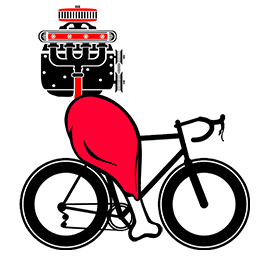Jumping Meta-Analysis Summary
Two recent studies analyzed the effects of jump training on endurance athletes and found notable performance improvements. The systematic reviews and meta-analyses examined controlled studies involving healthy endurance runners of any age or sex.
Jump training led to a significant moderate improvement in time-trial performance for distances between 2 to 5 kilometers, equal to 0.88 standard deviations. However, jump training did not improve maximal oxygen consumption, velocity at maximal oxygen consumption, velocity at submaximal lactate levels, heart rate at submaximal velocities, stride rate at submaximal velocities, total body mass or maximal strength performance.
While jump training did not enhance all measures, it did yield small to moderate improvements in jump performance, rate of force development, sprint performance, reactive strength, and running economy, ranging from 0.36 to 0.73 standard deviations with statistical significance.
The studies agreed that jump training improves endurance runners’ physical fitness and athletic performance. The improvements in time-trial performance may stem from enhancements in force generation capabilities and running economy from jump training.
To apply these findings, endurance runners can incorporate jump training into their regimens to improve time-trial performance, jumping ability, acceleration, reactive strength, and running efficiency. However, jump training may not directly improve sustained top speeds, economy at submaximal intensities, or other measures. The ideal volume, intensity, and frequency of jump training for endurance athletes requires further research.
In summary, jump training can boost endurance runners’ athletic performance in select areas, especially for middle-distance time trials. Jump training is a promising supplement to traditional endurance workouts for runners seeking a competitive edge.
Want to Jump Train?
Here are potential jumps to incorporate.
Box jumps
Box jumps are a great exercise to improve power and explosiveness. Start in a standing position in front of a box or platform, bend your knees and jump up onto the box using both legs. Step down slowly. Start with a lower box height and build up as your skills improve.
Tuck jumps
For tuck jumps, stand with feet shoulder-width apart and arms overhead. Bend your knees and jump up, bringing your knees up to your chest in the air. Land softly on the balls of your feet with your knees bent. This works power and coordination.
Lunge jumps
From a reverse lunge position with back knee nearly touching the ground, jump up powerfully using both legs. Land in the same reverse lunge position. Repeat and perform on the other leg. Lunge jumps build single-leg power and stability.
Squat jumps
Start in a squat position with knees bent and hips back, then jump straight up as high as possible. Land softly in the squat position. Squat jumps help improve the power from your legs.
Calf “Only” Jumps
Jump attempting only to use propulsion from your calf muscles. Other muscles will come into play, but try to gain most of the power for the jump via your calves.
• Vertical jumps:
Stand with feet shoulder-width apart, bend your knees and swing your arms behind you, then swing arms overhead as you jump straight up. Reach as high as you can and land softly on the balls of your feet. Measure your jump height to track progress. Vertical jumps directly improve your leaping ability.
Broad jumps:
Swing your arms behind you and jump forward off of both feet, landing on both feet without staggering. Measure the distance from your starting position to back heel. Broad jumps build power and horizontal force production, which can translate to sprinting speed.
This study doesn’t report on a specific protocol. Following other plyometric findings, these jump exercises could be done 2-3 times a week, with 3-5 sets of 5-10 repetitions for each exercise. Start with lower volume and build up as your jump skills and power improve over time. Be sure to get full recovery between jump workouts and incorporate them strategically into your running schedule.
Study Abstract
Effects of jump training on physical fitness and athletic performance in endurance runners: A meta-analysis
Meta Analysis
This systematic review and meta-analysis aimed to assess the effects of jump training (JT) on measures of physical fitness and athletic performances in endurance runners. Controlled studies which involved healthy endurance runners, of any age and sex, were considered. A random-effects model was used to calculate effect sizes (ES; Hedge’s g). Means and standard deviations of outcomes were converted to ES with alongside 95% confidence intervals (95%CI). Twenty-one moderate-to-high quality studies were included in the meta-analysis, and these included 511 participants. The main analyses revealed a significant moderate improvement in time-trial performance (i.e. distances between 2.0 and 5.0 km; ES = 0.88), without enhancements in maximal oxygen consumption (VO2max), velocity at VO2max, velocity at submaximal lactate levels, heart rate at submaximal velocities, stride rate at submaximal velocities, stiffness, total body mass or maximal strength performance. However, significant small-to-moderate improvements were noted for jump performance, rate of force development, sprint performance, reactive strength, and running economy (ES = 0.36–0.73; p < 0.001 to 0.031; I2 = 0.0% to 49.3%). JT is effective in improving physical fitness and athletic performance in endurance runners. Improvements in time-trial performance after JT may be mediated through improvements in force generating capabilities and running economy.
Published in Journal of Sports Sciences 2021
Authors: R. Ramírez-Campillo, D. Andrade, F. García-Pinillos, Y. Negra, D. Boullosa, J. Moran

Jordan Fowler has experience as a head swimming coach of the Frisco Swim Team, a TAAF-awarded coach, a track and field distance running consultant for select Texas High School runners, and has competed as a triathlete, road runner, and cyclist. Though he is remarkably slower than he was in his 20s and 30s, he still enjoys endurance sports and sports science studies.
